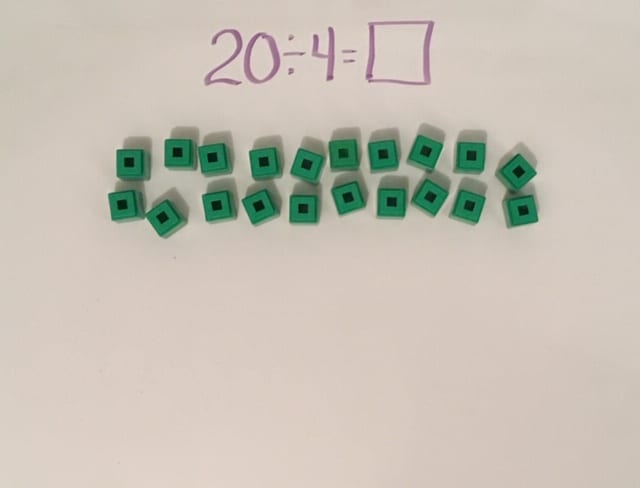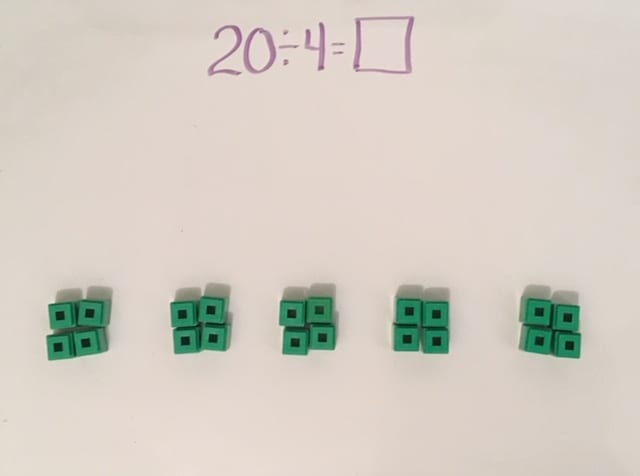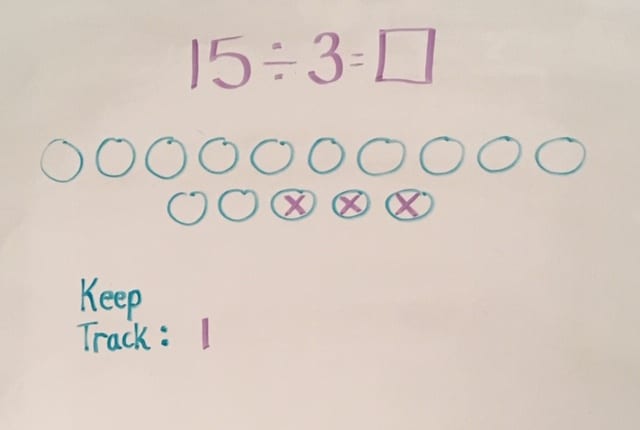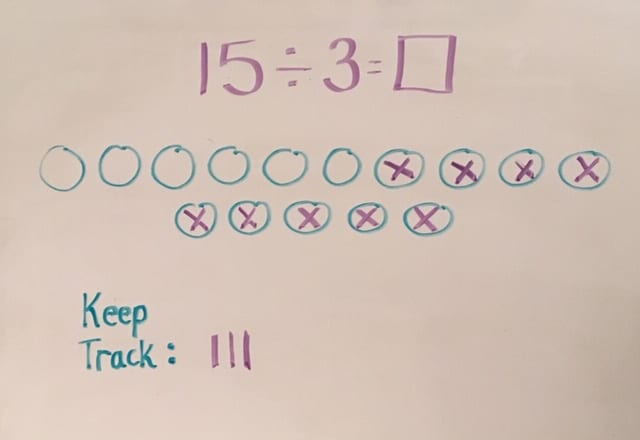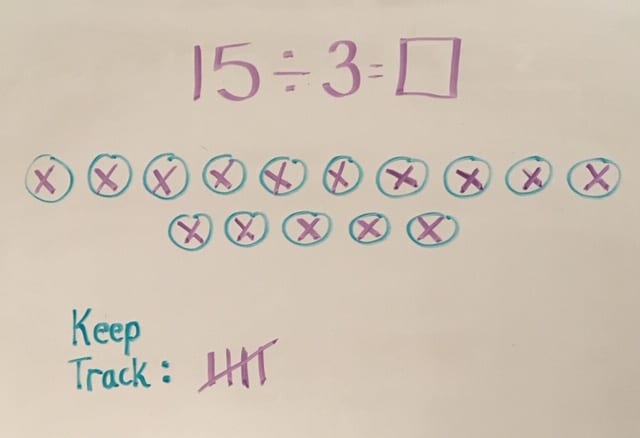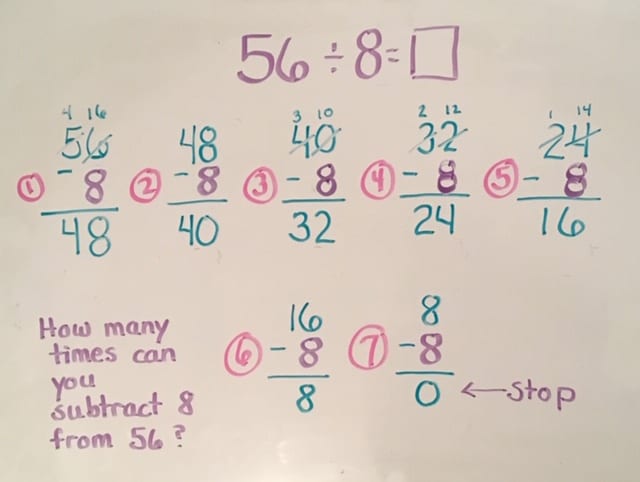by C. Elkins, OK Math and Reading Lady÷
In my opinion, the process of repeated subtraction is very important for students to practice. With repeated subtraction, we are actually asking this question: “How many _____ in _______?” If the problem was 20÷4, we can ask, “How many 4’s are in 20?” The process is to keep subtracting 4 (using concrete, pictorial, and abstract methods) until zero is reached. This would be done 5 times — thus, 20 ÷ 4 = 5.
Much like multiplication, there are different aspects of division children should become familiar with.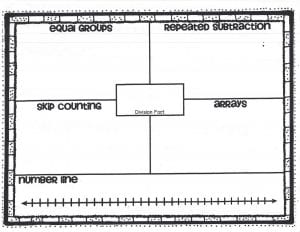
- Arrays
- Equal Groups
- Repeated Subtraction
- Number lines
- Skip counting
The focus today will be to help children understand how repeated subtraction can assist with the division process (using manipulatives, drawings, and paper-pencil methods). The template pictured here is FREE from: Multip. and Division templates FREE from Number Two Pencils @ TpT
The reason the repeated subtraction strategy is important is because this is what we are really asking students to do when they encounter long division or partial quotient problems. With the problem 100 ÷ 4, the question is, “How many 4’s are in 100?” If the repeated subtraction process is used, the answer is of course, 25. But subtracting 4 twenty-five times is not very efficient. So we want the student to get closer to 100 and subtract larger amounts than 4 at a time. The partial quotients method would allow the student to do this in chunks. 1 solution could be to subtract 40 (ten 4’s), subtract another 40 (ten more 4’s), subtract 20 (five 4’s). See picture below:
With the std. long division algorithm, students also must think of division as repeated subtraction. You wouldn’t believe the number of “ah-ha’s” I get from students when I show them this concept!! Here’s a link to a previous post on long division. Making sense of division
So, how do we encourage this strategy with new learners using basic division facts? Check these out:
- Manipulatives: If the problem is 20 ÷ 4, start with 20 objects. Then take away 4 at a time by moving them to the side and forming a group. Repeat until all 20 objects have been taken from the original group. How many groups were made? This is a quick, meaningful any very efficient method to help students actually see equal groups being constructed. A must before going to drawings or paper pencil methods.
- Drawings: If the problem is 15 ÷ 3, draw 20 objects. Cross off 3 at a time and keep track (ex: tallies). Keep crossing off 3 at a time until all 15 objects have been crossed off. How many times was this done?
- Number line: If the problem is 10 ÷ 2, draw an open # line and label with 10 points (0-10). Starting with 10, jump backward 2 at a time until 0 is reached. Count how many jumps were made. This is more effective with dividends 20 or less due to space and amount of time this takes. Consider a vertical # line as well.
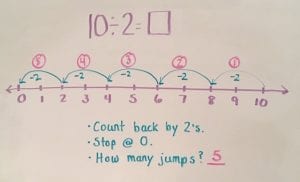
- Subtraction: If the problem is 56 ÷ 8, write the # 56, then subtract 8 repeatedly until there is zero left. Keep a running total. Common errors with this method are failure to follow regrouping steps and poor calculations.
I came across this FREE resource from Number Two Pencils: Free Multip. and Division templates showing a template for illustrating the 5 division strategies. I completed two of them for you to see how these can be used effectively in the classroom. They could also be used as anchor charts (and then student can create some of their own). There is also a companion set for multiplication strategies. Get your set here: Multip. and Div. strategy anchor charts
Enjoy your division journey! Stay tuned for more!
